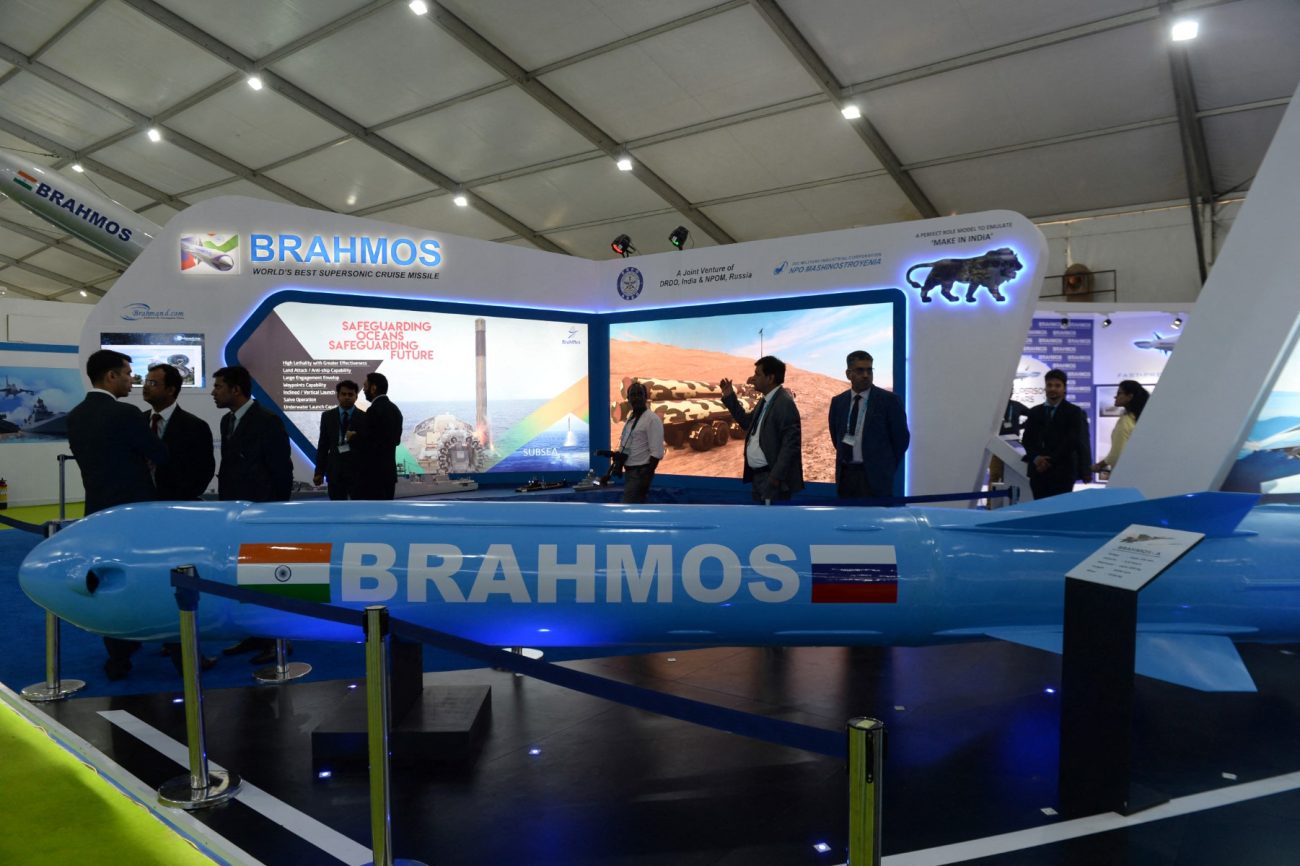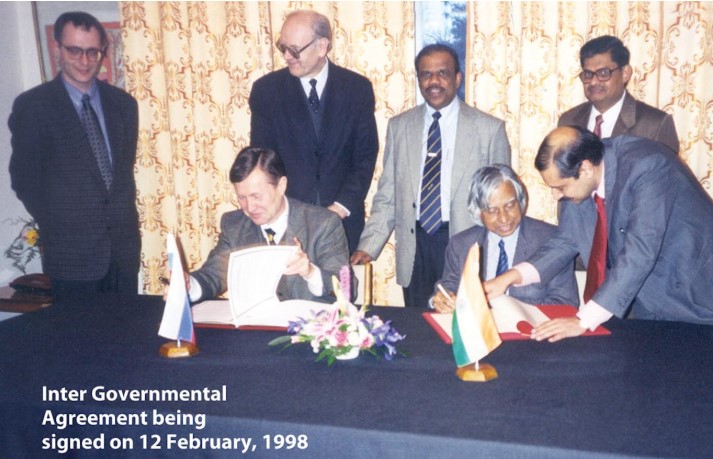BrahMos “Not Ideal” For Ukraine-Like War! Why India Must Look Beyond Indo-Russian Supersonic Missile?

India’s supersonic cruise missile BrahMos was the star of Operation Sindoor that wreaked havoc on Pakistani air bases with its precision, speed, and lethality.
Islamabad seemed to have no answer for the missile as it pierced the country’s air defenses and obliterated not one but as many as 11 Pakistani Air Force bases within a span of 20 minutes.
While no official figures are available, Indian media reports indicate that the Indian Air Force (IAF) fired between 15 and 19 BrahMos missiles from Su-30MKI fighter jets during the operation, and an overwhelming majority of them hit their targets.
There is an old proverb that says, “The best praise is that which comes from your adversary.”
Indeed, BrahMos’s lethality has been acknowledged even by its victims.
Speaking at a summit in Azerbaijan on May 30, Pakistan Prime Minister Shehbaz Sharif publicly admitted that India’s BrahMos missile strikes stopped a planned Pakistani military offensive on the night of May 9 and 10.

“On the night of May 9-10, we decided to respond in a measured fashion to Indian aggression,” Sharif said. “And we had decided that at 4:30 in the morning after Fajr prayers, Pakistan armed forces, led very ably by our field marshal, Chief Army Staff, sitting here, Syed Asim Munir, to teach a lesson to our enemy.”
“But before that hour reached India again launched missile attacks, and BrahMos hit Pakistan’s various provinces, including the airport in Rawalpindi and other places,” the Pakistan PM added.
Similarly, Rana Sanaullah, special assistant to Prime Minister Sharif, admitted that “silent BrahMos” gave Islamabad only “30 seconds” to respond before the missile struck the Nur Khan airbase in Chaklala, Rawalpindi, a key Pakistan Air Force site housing VIP fleets and Turkish Bayraktar TB2 drones.
“Pakistan had only 30 or 45 seconds to respond,” he said. “Now, this BrahMos missile coming silently if it had been nuclear, and to make the decision in just 30 seconds about whether it was or wasn’t that shows you how dangerous the situation was.”
These ‘grudging admirations’ from Pakistani officials highlight the terror the missile struck in the hearts and minds of top Pakistani brass.
Given that this was the first combat test of BrahMos, it can be safely said that the cruise missile received its baptism by fire.
However, India must be cautious not to become overly dependent on the cruise missile, for all its strengths and advantages, the missile suffers from some crucial limitations.
The BrahMos Story
BrahMos was developed initially through a partnership between India and Russia.
In 1998, India and Russia signed an intergovernmental agreement that led to the formation of BrahMos Aerospace (BA), a joint venture between DRDO and Russia’s NPO Mashinostroyenia (NPOM), with India holding a 50.5 percent stake and Russia holding 49.5 percent.

The company was established with an authorised capital of US$300 million.
The joint venture aimed to design, develop, manufacture, and market the world’s only supersonic cruise missile system — BrahMos.
The first successful launch of the BrahMos supersonic cruise missile took place on 12 June 2001. The missile was test-fired from a stationary vertical launcher off the Chandipur coast in Odisha, India.
The BrahMos missile is a two-stage weapon. The missile launches with a solid-fuel booster, which detaches after take-off. A liquid-fuelled ramjet engine then propels it at speeds approaching Mach 3.
The missile works on a “fire and forget” principle, meaning once launched, no further guidance is required.
The missiles’ terrain-hugging trajectories, low radar signatures, and high kinetic energy make them especially difficult to intercept.
The Indian Navy inducted its first BrahMos system in 2005 aboard INS Rajput. The Indian Army followed in 2007 with its own regiments, and the Air Force later introduced an air-launched version from the Sukhoi-30MKI aircraft in 2019.
Currently, three new variants are under development: BrahMos Extended Range (1,500 km range), BrahMos-II Hypersonic (designed to cruise at Mach 8), and BrahMos-NG (Next Gen), a lighter version that could be launched from other aircraft, such as the Tejas.
The BrahMos is a lethal, high-speed, precision, stand-off missile that can be launched from the ground, sea, and air. Clearly, it’s a very capable weapon system; however, despite its many strengths, it suffers from some limitations.
Is India Getting Overtly Dependent On BrahMos?
One of the main arguments against BrahMos is that it is a costly weapon and cannot be used at scale in protracted wars.
India launched 15-19 BrahMos missiles during the four-day war with Pakistan in May. However, had that war lasted longer, it is doubtful that India would have been able to maintain this rate of BrahMos missile firing.
In fact, BrahMos is among the costliest cruise missiles in its class. Many other combat-tested cruise missiles offer two to three times the range of BrahMos at less than half the cost, even if they offer much less speed than BrahMos.
The average per-unit cost of BrahMos ranges from USD 2.75 million to USD 4 million. In comparison, the US Tomahawk missiles, which incidentally served as an inspiration for Indians to develop their own high-speed cruise missile, cost USD 1.3 to USD 2.5 million.
However, in terms of range, the Tomahawk far exceeds BrahMos. The Tomahawk offers a range of 1,000-2,500 km, whereas BrahMos’s range is a modest 290 km.

Similarly, the Russian Kalibr cruise missile, widely used in the Ukraine war, offers a range of 1,500-2,500 km and costs nearly USD 1.5 to USD 2.4 million.
However, BrahMos beats Tomahawk and Kalibr in terms of speed.
The Chinese YJ-12 is perhaps the best competitor of BrahMos. The YJ-12 has a range of 250-400 km, comparable to BrahMos’s 290 km range, and both have a speed of around Mach 3.
However, even the YJ-12 costs around USD 1.2 to 1.8 million per unit, compared with BrahMos’s average cost of USD 3.5 million per unit.
One reason for BrahMos’s high cost could be that missiles like the US Tomahawk, Harpoon, and the Russian Kalibr have benefited from mature production lines and large orders.
It is entirely possible that, after receiving multiple orders, the per-unit cost of BrahMos could come down significantly; however, for now, it remains one of the costliest cruise missiles on the market, which severely limits its use in large numbers.
Another argument against BrahMos is India’s inability to produce them at scale.
Currently, India only produces 50-100 units per year.
However, it must be noted that India has operationalised a new BrahMos plant in Uttar Pradesh, which will be able to add another 80-100 missiles per year.
According to estimates, by 2027, India could produce 200-300 BrahMos per year.
That will be a significant improvement, but perhaps still not sufficient for an intense, protracted war, such as the war in Ukraine.
For instance, Ukraine’s new cruise missile, Flamingo, has a range of over 3,000 km, and Kyiv is aiming to produce 7 Flamingo missiles per day, which means an average annual production rate of over 2,500 missiles.
True that Flamingo is large, bulky, and slow, and can be easily shot down by air defense systems; however, if Ukraine launches them at scale —dozens in a single salvo —they can overwhelm air defenses, and some could strike their targets.
Perhaps India also needs a new, cheaper cruise missile that can be produced efficiently in the hundreds to complement BrahMos.
According to former Indian Air Force pilot and defense analyst Vijainder K Thakur, “India needs a more affordable, ground-launched, long-range cruise missile that can be produced in significant quantities during a protracted war — a missile similar to Ukraine’s Flamingo.”
This new, cheaper cruise missile should not replace BrahMos, but complement it.
In that scenario, BrahMos could be reserved for high-threat, high-value targets, while the cheaper cruise missile could be used in mass to overwhelm enemy air defenses.
Thus, the new cruise missile could act as a force multiplier to BrahMos.
- Questions and Answers
- Opinion
- Motivational and Inspiring Story
- Technology
- Live and Let live
- Focus
- Geopolitics
- Military-Arms/Equipment
- Sicurezza
- Economy
- Beasts of Nations
- Machine Tools-The “Mother Industry”
- Art
- Causes
- Crafts
- Dance
- Drinks
- Film/Movie
- Fitness
- Food
- Giochi
- Gardening
- Health
- Home
- Literature
- Music
- Networking
- Altre informazioni
- Party
- Religion
- Shopping
- Sports
- Theater
- Health and Wellness
- News
- Culture

